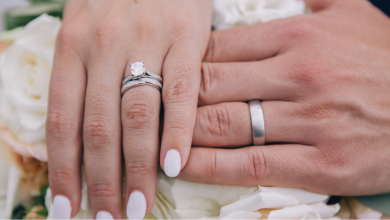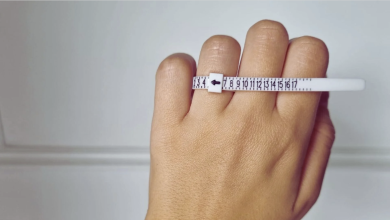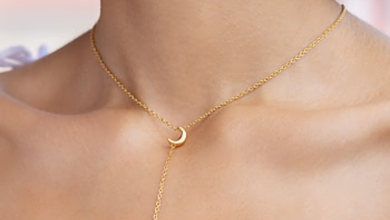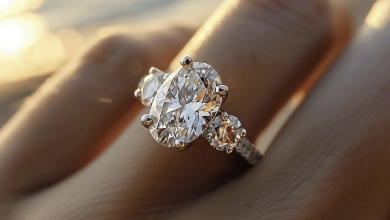Assessing the Sustainability of Your Jewelry: Comparing the Environmental Impact of Pearl Bracelets, Gold Rings, and Other Pieces

While jewelry might not immediately come to mind when we think of sustainable practices, it certainly plays a significant role in discussions about environmental responsibility. The process of extracting materials and producing jewelry can profoundly affect both ecosystems and labor conditions, which has fueled a growing demand for more sustainable and ethical practices in the jewelry industry.
Research indicates that sustainability now plays a crucial role in consumers’ buying decisions. Shoppers are increasingly seeking transparency and accountability from brands, not only in terms of environmental impact but also in promoting fair labor practices and social justice.
So, what exactly does sustainability mean in the context of jewelry, and how can consumers make more eco-conscious choices? This guide will explore what it means to choose sustainable and responsible jewelry, delving into its various impacts.
When considering a new piece, whether it’s pearls or a smartwatch, these insights will help gauge its sustainability.
Key Aspects of Jewelry Sustainability
Evaluating jewelry from a sustainability perspective involves looking at environmental, economic, and social dimensions. This comprehensive approach considers the ecological footprint of jewelry production, the welfare of involved communities, and the economic practices employed.
Here are essential considerations when evaluating jewelry:
Material Origins: Where Does it Come From?
Whether your jewelry is made of gold or gemstones, the origin of these materials is critical. While fine jewelry often includes lab-grown gems today, both mined and lab-created materials have their own environmental costs.
From an ecological standpoint, mining can lead to significant environmental damage, including habitat destruction and water pollution. To minimize this impact, consider opting for secondhand pieces, recycled materials, or lab-grown gemstones.
Socially, the procurement of raw materials for jewelry often involves exploitation, particularly in “artisanal mining,” which affects over 100 million people globally. Organizations like the Kimberley Process and Fairtrade are instrumental in ensuring that materials are sourced without exploiting workers.
Manufacturing Process: How Was it Made?
Jewelry manufacturing typically consumes substantial resources and generates waste. However, industry innovations, such as closed-loop water systems and material recycling, aim to reduce these impacts.
Companies are increasingly adopting energy-efficient practices, such as solar-powered facilities and LED lighting, to lessen their environmental footprint throughout the production process.
Durability and Longevity: How Long Will it Last?
The durability of jewelry significantly depends on its craftsmanship, design, and materials. High-quality, well-designed pieces are intended to last, reducing the need for frequent replacements and the demand for new resources, making them a worthy investment.
Features like robust clasps and sturdy settings are crucial for ensuring that jewelry lasts for generations. Moreover, designs that eschew fleeting fashion trends in favor of timeless appeal can remain relevant and cherished for decades.
End-of-Life and Recyclability: What Happens Next?
Even at the end of its life, a piece of jewelry’s sustainability matters. Designs that facilitate disassembly allow for the recycling of metals and gemstones. High-quality materials are particularly conducive to recycling.
Programs that encourage the return of old or unwanted jewelry for recycling, refurbishment, or resale also play a part in sustainable practices, embodying the “reduce, reuse, recycle” principle.
Assessing Common Jewelry Pieces for Sustainability
With these sustainability criteria in mind, let’s examine some common types of jewelry:
- Pearl Necklace: The sustainability of pearl necklaces largely depends on the sourcing and farming of the pearls. Modern pearl farming has made strides in reducing environmental impact and can even support marine biodiversity.
- Gold Ring: The environmental and ethical challenges of gold mining are significant. Recycled gold, which avoids the pitfalls of mining, offers a more sustainable alternative.
- Antique Brooch: Opting for vintage or second-hand pieces avoids the environmental costs of new material extraction and manufacturing.
- Silver Charm Bracelet: Like gold, the sustainability of a silver charm bracelet hinges on whether the silver is recycled, as mining can be environmentally detrimental.
- Smartwatch: The demand for rare earth minerals for smartwatches presents considerable environmental and ethical issues, complicated further by the rapid obsolescence typical of tech products.
- Luxury Watch: High-quality materials and craftsmanship in luxury watches promote longevity, making them a more sustainable choice due to their durability and active secondary market.
- Costume Jewelry Ring: Often made from less durable materials, costume jewelry can lead to higher waste and has limited recyclability, posing significant sustainability challenges.
Making Sustainable Jewelry Choices
To truly impact sustainability, consumers must be informed and intentional in their jewelry purchases. Opt for pieces made from recycled materials, support brands with transparent and ethical practices, and choose craftsmanship that promises longevity. By doing so, you can contribute to a more sustainable future in jewelry.



